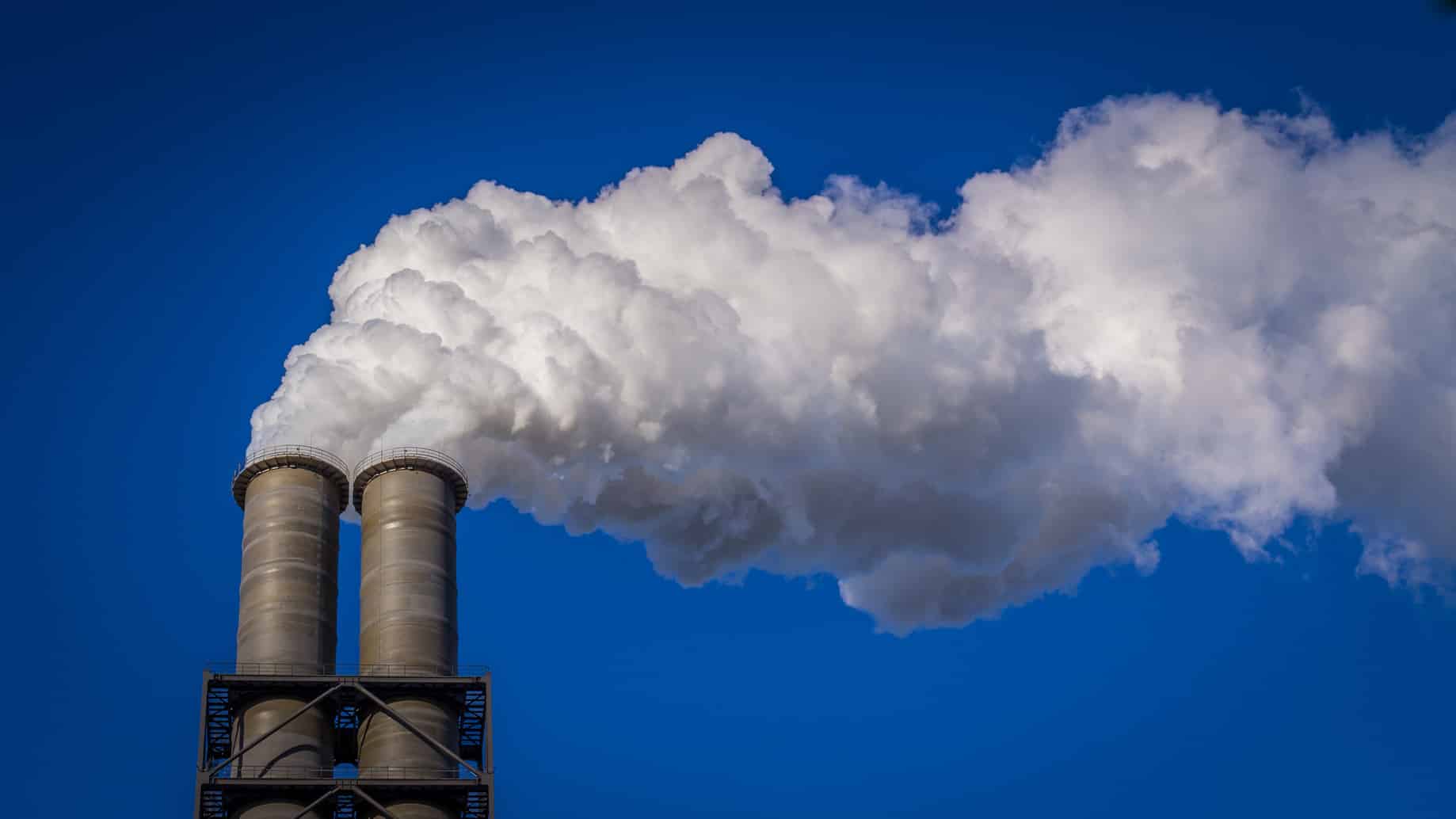Antipollution
The term antipollution describes the most comprehensive possible protection of the skin against various dirt particles as well as the effective prevention or repair of skin damage caused by environmental influences. The biggest factors that play a role in skin damage caused by environmental influences are free radicals (caused by substances generated by exhaust gases as well as by ozone pollution), UV radiation as well as fine dust particles (2.5-10µm). The consequence of these environmental influences is primarily a massive oxidative stress in the skin. This in turn can lead to redness or micro-inflammation in connection with melanocyte activation (hyperpigmentation), inactivation of structural proteins and reduction of cellular activity. The skin looks increasingly tired, it makes a sallow or even blotchy impression and may even show unevenness.
Negative environmental influences also accelerate the formation of wrinkles in our skin. Free radicals attack our skin’s own cells, where they activate enzymes that promote collagen breakdown. Fine dust particles also deepen the nasolabial fold and, as already mentioned, can cause pigment spots on the forehead and cheeks (for more information see the article on hyperpigmentation).
Another phenomenon in this context: especially women living in big cities often have to struggle with is adult acne and unsightly skin shine. The reason is obvious: to protect itself from external influences, the skin produces more sebum and thus also often tends to develop impurities.
But what exactly is particulate matter? It mainly includes soot particles, diesel exhaust fumes and coal dust. The particles have a very small size and unfortunately settle very easily and stubbornly on the skin. The chemicals that adhere to the particles penetrate the skin and exert their damaging effects.
Consequently, the field of antipollution includes the following tasks:
- The effective protection against external influences
- Ensuring sufficient hydration
- Repairing or reducing damage that has already occurred
- Ensuring optimal blood circulation in the skin, so that the removal of various degradation products, which occur during the damage process, can be guaranteed.
- The activation of structural protein synthesis
The possibilities of antipollution
In order to provide optimal protection against environmental influences, a film on the skin should reduce the penetration of harmful substances as much as possible. It is important that the film can be easily washed off so that the fine particles are removed during body cleansing. Good are especially those products that provide the skin on the face with sufficient moisture and at the same time act like a protective filter. Because one fact is certain:
The healthier and more moisturized the complexion is, the easier it is to wash off dirt such as soot or fine dust. If, on the other hand, the skin is very dry, harmful particles can penetrate the skin without resistance.
Corresponding active ingredients for antipollution products also already exist: And these come primarily from our nature, which means they are very gentle, but still effective. The extracts from sunflower seeds and ivy, for example, are very rich in phenolic acids (including caffeic acid and chlorogenic acid). They are able to form a complex with metal ions, which are actually harmful, and bind them so that they become harmless to the skin. Or phytic acid from rice bran: it can support the antipollution protective effect with its antioxidant and complexing properties. Interestingly, it primarily counteracts the harmful properties of sulfur dioxide and cigarette smoke. Sulfur dioxide is mainly produced during the combustion of fossil fuels, and in this way, it also enters the ambient air. If it is then deposited on our skin and subsequently enters the intercellular space, it dissolves there and forms oxidatively damaging substances. The skin becomes extremely sensitive. It is therefore no wonder that neurodermatitis cases increase in cities with a high level of air pollution.
If appropriate active ingredients are incorporated into antipollution products, they can ensure that their damaging potential is significantly reduced as soon as the pollutants hit the skin surface.
It is also important that the skin barrier is strengthened and optimally built up to ward off pollution. Niacinamide is a good choice for antipollution products in this context. The substance restores the natural barrier function. Essential fatty acids are also very suitable for corresponding products, as they are particularly similar to skin lipids.
In the fight against free radicals (ROCs), a highly polyphenol-containing antipollution extract from meadow knotweed is also suitable. A special extract from elderberries is also able to intensify the blood circulation in the tissue and thus also the optimal removal of degradation products.
Oryzanol, an active ingredient from rice, is also a useful solution in the area of antipollution, as it reduces the negative effects of UV radiation.
The antipollution active ingredient saw kelp (Fucus serratus), a widespread and very valuable type of algae, also acts against skin aging.
In order to get rid of all the dirt that has accumulated during the day, a very thorough antipollution facial cleansing is the top priority of daily body hygiene. Antipollution products with the mentioned ingredients make an important contribution to this. If you want to be even more thorough, a gentle but effective peeling additionally frees the facial skin from harmful or dead cellular waste.
Antipollution: Interesting facts about fine dust and other pollutants
According to their size, all dust particles are generally divided into different classes. Fine dust (PM10) refers to all those particles that have an aerodynamic diameter of less than 10 micrometers. The size of the particles and their chemical composition determine the chemical and physical properties of the dust. Properties such as geometric shape, particle size, and pollutants adhering to the surface are particularly relevant to the impact on our health. In the worst case, very fine dust particles can penetrate far into our lungs, where they then exert their harmful effects on health.
And then there is another very dangerous connection: When UV radiation hits the nitrogen oxides from car and factory exhaust, volatile organic compounds and carbon monoxide, these so-called precursor gases are converted into ozone by special photochemical processes. The sunnier and therefore more radiant a day is, the more ozone is produced. This is where antipollution is particularly important.
Fact sheets of the most important active ingredients
Antipollution active ingredient: Niacinamide
CAS number: 98-92-0
INCI: Niacinamide
Description: an amide of nicotinic acid (niacin, vitamin B3).
Action: protects the skin from water loss, promotes the formation of collagen, accelerates skin renewal, prevents skin aging, reduces pigmentary disorders
Use: mainly in skin care products, anti-aging products, skin lightening products, preparations against impure skin and antipollution products.
Antipollution active ingredient: Oryzanol
CAS number: 11042-64-1
INCI: Oryzanol
Description: a white to white-yellowish powder of phytosterols (esterified with ferulic acid) from the rice germ oil of the rice plant, which belongs to the grasses.
Effect: antioxidant, barrier-protecting, UV light-absorbing, anti-inflammatory, inhibits the formation of oxygen radicals, which occur during oxidative stress
Use: ideal additive for natural cosmetic sun protection products and antipollution preparations.
Antipollution active ingredient: saw kelp (Fucus serratus)
Description: brown algae species, also found in the North and Baltic Seas.
Rich in: contains a very high concentration of polyphenol and fucoxanthin
Action: antioxidant (prevents skin aging) and water-binding, prevents specific chemical reactions in the skin that contribute to aging
Antipollution: products made by Cosmacon
Good and high-quality products from the field of antipollution meet the following requirements: They protect the skin from harmful external influences and provide it with optimal moisture, they repair or reduce damage that has already occurred, they ensure good circulation so that degradation products can be reliably removed, they prevent or alleviate hyperpigmentation caused by environmental influences and make the skin appear much healthier and more vital overall. Since stresses such as fine dust can pose a considerable danger, it is all the more important to integrate appropriate products into the daily beauty and care ritual. In the field of antipollution, nature provides us with very valuable active ingredients that are harmless to humans and a blessing for the skin. Cosmacon develops innovative and highly effective antipollution preparations from carefully selected active ingredients and raw materials according to your wishes. In doing so, we naturally focus on your ideas and requirements.
Sources:
Cosmetic functional ingredients from botanical sources for anti-pollution skincare products.; JULIANO, Claudia; MAGRINI, Giovanni Antonio. Cosmetics, 2018, 5. Jg., Nr. 1, S. 19.
Guidelines for formulating anti-pollution products.; MISTRY, Niraj. Cosmetics, 2017, 4. Jg., Nr. 4, S. 57.
Efficacy of an Antiaging Treatment Against Environmental Factors: Deschampsia antarctica Extract and High-tolerance Retinoids Combination.; J Clin Aesthet Dermatol. 2019 Jul;12(7):E65-E70
Yodkeeree, S., Thippraphan, P., Punfa, W., Srisomboon, J., & Limtrakul, P. (2018). Skin anti-aging assays of proanthocyanidin rich red rice extract, oryzanol and other phenolic compounds. Natural Product Communications, 13(8), 1934578X1801300812.

